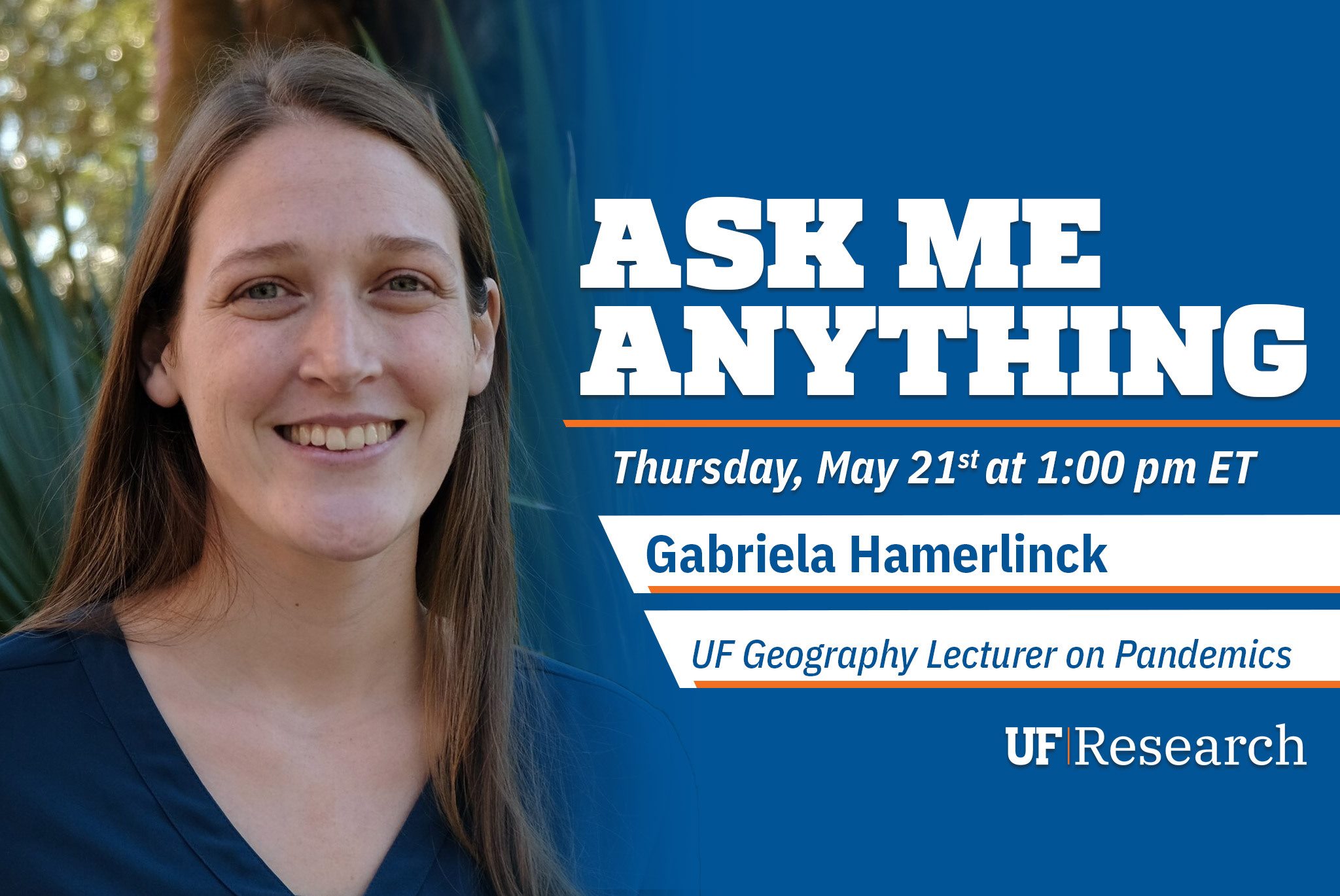
Dr. Gaby Hamerlinck
Pronouns: she/her
Lecturer
University of Florida
Focus Areas:
Research Statement: Dr. Hamerlinck is a quantitative ecologist broadly interested in ecological modeling of host-parasite interactions. She has additional research interests and postdoc experience in quantitative biology education. At UF, Dr. Hamerlinck teaches many courses about medical geography, aiming to offer better understanding of vector- and human-disease systems.

Who is she?
Dr. Gabriela Hamerlinck is a Lecturer of Geography at the University of Florida. She is a Medical Geographer trained in ecological modeling of host-parasite interactions. Gaby has formal training in science pedagogy focusing on integrating math and biological education for college students. Prior to her current position, Gaby was a Postdoctoral Researcher in UF’s Quantitative Disease Ecology & Conservation (QDEC) Lab after completing her first postdoctoral position with BioQUEST Curriculum Consortium working on the QUBES project. Gaby grew up in Saint Paul, Minnesota and was able to occasionally visit her mom’s family in Chile.
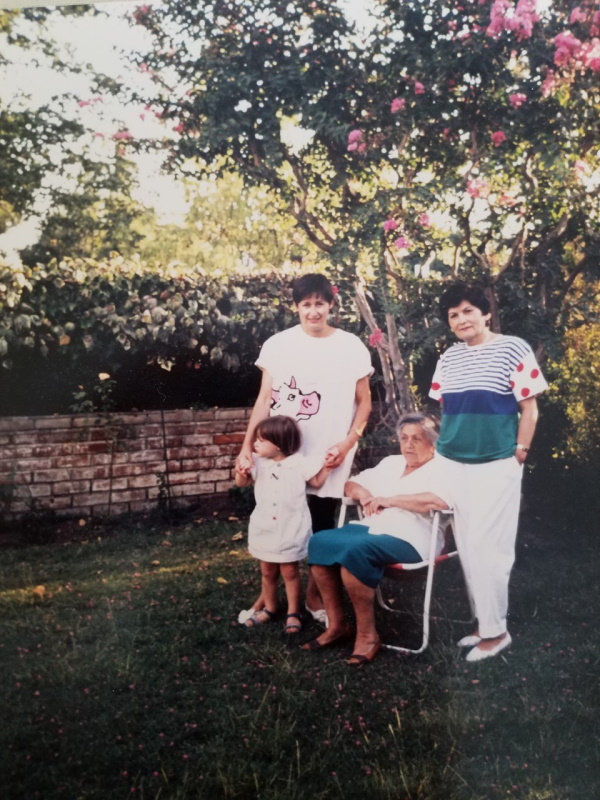
How did she get here?
Gaby grew up in Saint Paul, Minnesota. She spent many weekends and vacations visiting a hunting property with an old farmhouse, where she reveled in exploring nature. She would wander the neighborhood with her little red wagon, gathering insects in a cage her dad built. After a few summers attending zoo camp at the Minnesota Zoo, she eventually moved beyond ‘I want to be a veterinarian’ to ‘I want to be a biologist’.
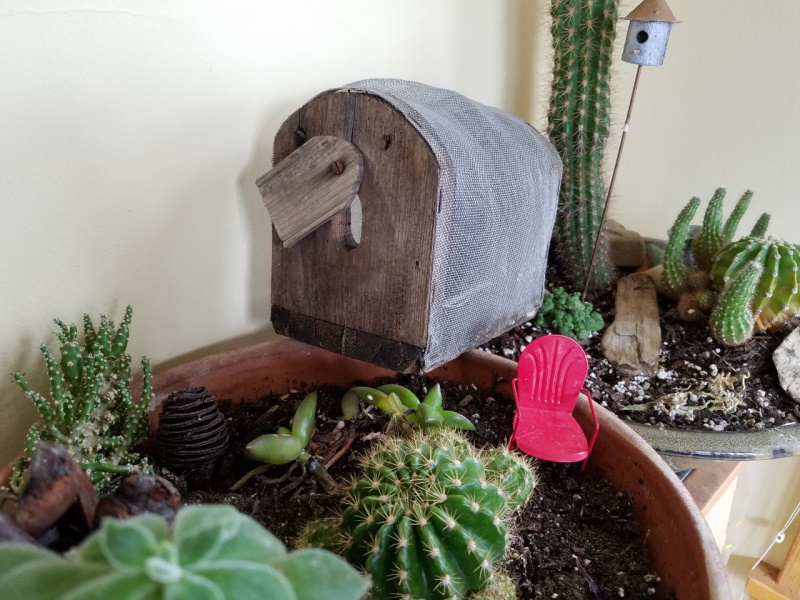
Gaby has been lucky to have had the opportunity to visit family abroad in Chile. These trips not only got her away from the Minnesota winters, but also gave her a chance to experience her cultural heritage and learn her family history.
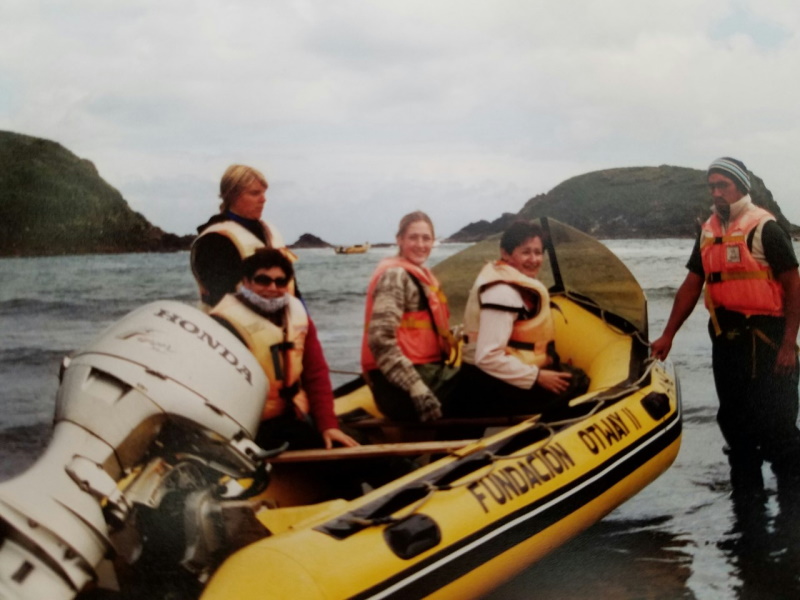
Gaby cultivated a love of mathematics through childhood. Her dad taught her about geometry while playing pool and explaining basketball shots, and her grandpa introduced her to probability and statistics during endless card games. At the same time, she was also studying Spanish and playing basketball, soccer, and track.
Gaby moved to Seattle to start college, but quickly returned to the Twin Cities, finding her undergrad home at Augsburg University, where she earned a B.S. in Biology and a B.S. in Mathematics. Always a student-athlete, she continued to high jump and play soccer in college. Repeated injuries stopped her from running competitively after high school.
Gaby was driven during college – completing 2 degrees, working, and playing collegiate sports – all in under 4 years. She would take intensive summer programs to earn her credit hours. The summer after her Junior year, she spent a month and a half in New Zealand and the Cook Islands for a Biodiversity and Sustainability course series. On the way home, she parted from her classmates at LAX, where she diverted to Michigan. The morning after arriving at 2 AM, she started a 7 week biomath program called Encouraging Linkages between Mathematics and Ecology at Michigan State University’s Kellogg Biological Station – where she designed experiments, collected data, and applied mathematical techniques to them. “It was the perfect Summer Camp for nerds!”, says Gaby.
After graduation, Gaby took a break from the hectic pace of college life, playing against semi-pro soccer teams in Germany, Belgium, and Holland for the summer. When her teammates headed home, she and a friend spent an additional month touring through Southern Europe. If you take one of Dr. Hamerlinck’s courses at UF, you might get to hear about her trip to the ‘Bone Church’ in Prague, where she enjoyed identifying the various human bones that adorn the world famous Sedlec Ossuary outside of Prague.
Once she was done with her summer break in Europe, Gaby moved to Iowa City, IA to begin her doctoral studies in Biology at the University of Iowa. She spent her first year at Iowa rotating between three labs before joining Dr. Andrew Forbes’ lab where she studied coevolution and ecological speciation within the Rhagoletis complex of flies and their associated parasitic wasps. For the fieldwork portion of her research, she traveled across the western United States gathering soil and fruit samples to identify and verify the characteristic tritrophic host associations of the plants, flies, and wasps. In the process, she was chased off of field sites by territorial turkeys, and had an awkward conversation with some Border Patrol agents about why exactly she was driving a plastic lined rental car full of buckets of soil around Arizona’s backcountry.

When she started graduate school, she knew she wanted a career in teaching. So she added night classes to her schedule, earning a Graduate Certificate in College Teaching. In the certificate program, she did two practicums – assessing learning objectives and course content in two introductory STEM sequences.
With a newly minted PhD and an ePortfolio full of college curriculum theory and practice, Gaby started a postdoctoral fellowship working for BioQUEST Curriculum Consortium on a collaborative project called QUBES (Quantitative Undergraduate Biology Education and Synthesis) in Madison, WI, where she developed and provided faculty professional development training – appropriate pedagogies for adding math to biology curriculum. Shortly after starting this postdoc, her boss moved to Maryland and Gaby continued as a Remote Doc. Over the course of her 3 year postdoc, she worked with more than 300 faculty across the country, traveling extensively (and spending a lot of quality time on Zoom) to give workshops and training at conferences and workgroups.
What’s she been doing at UF?
After her postdoc with QUBES and BioQUEST, Gaby came to the University of Florida as a Postdoctoral Fellow in the Quantitative Disease Ecology & Conservation (QDEC) Lab where she helped her adviser, Dr. Sadie Ryan, with research, data management, and reporting for the CDC Southeastern Center of Excellence in Vector Borne Diseases a multidisciplinary team in search of new knowledge and strategies on how to recognize, prevent, and control vector borne diseases in the Southeast.
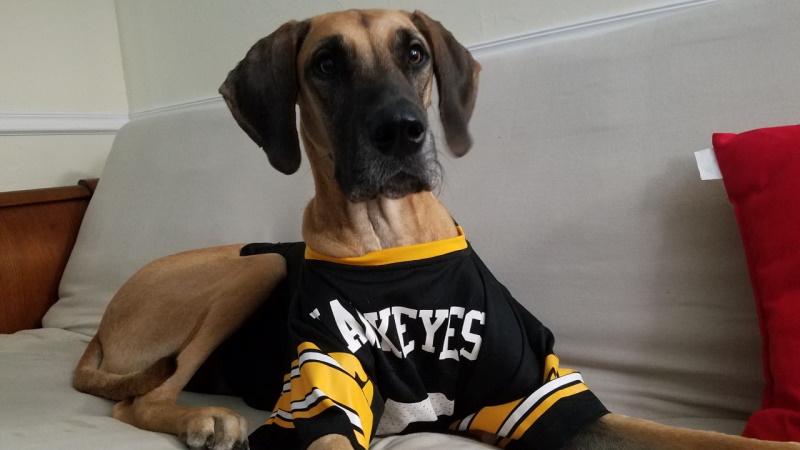
When the Lecturer of Medical Geography position was advertised, it was a perfect match for Gaby’s experience and interests.
Gaby has a heavy teaching load, but she’s doing what she loves – teaching The Next Pandemic , Global Patterns of STIs, and Peoples and Plagues. Teaching all of these Medical Geography courses has helped her get to know undergraduate students, some of whom have gone on to work with the Spatial Epidemiology & Ecology Research Laboratory (SEER Lab).
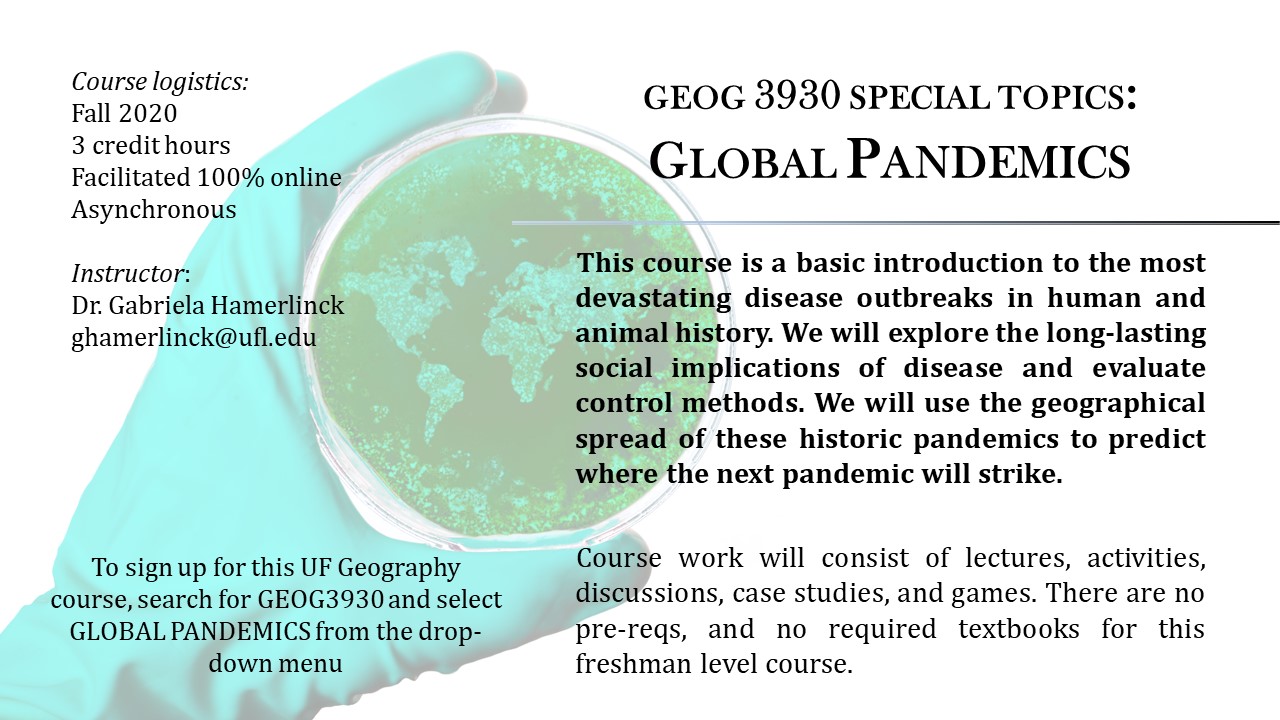
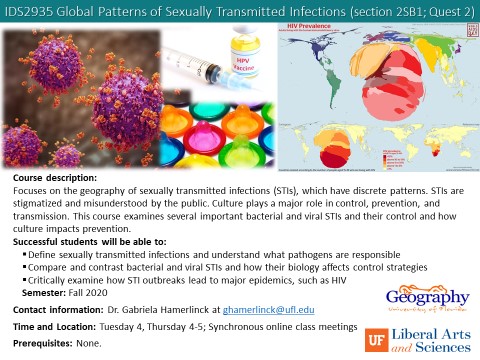
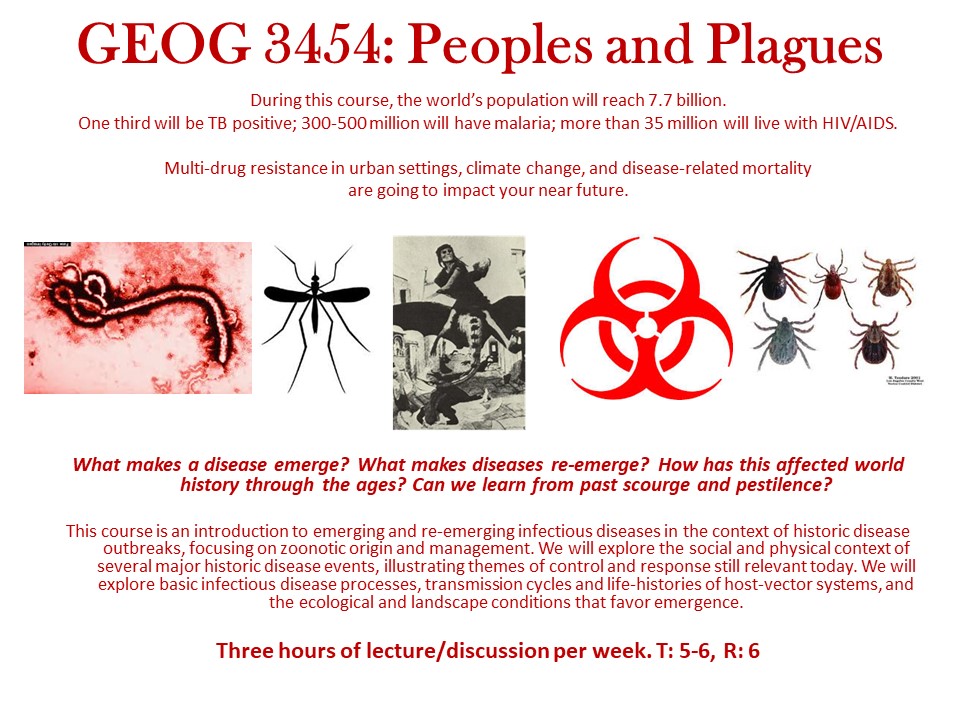
She hasn’t just been keeping her pedagogy in the classroom. Last spring, Gaby worked with the University of Florida Research News team on a Reddit AMA on pandemics, where she brought Medical Geography knowledge out of the academy. Gaby has also been working with the Center for Teaching Excellence at UF, where she’s run into other faculty members who have sung the praises of the QUBES and BioQUEST Curriculum Consortium.
Throughout her career, Gaby has been committed to improving inclusion and accessibility in higher education. During her first postdoc, she had the opportunity to visit Gallaudet University, the world’s only university in which all programs and services are specifically designed to accommodate deaf and hard of hearing students – to learn how the institution makes learning accessible and equitable. At UF, she also serves on the Geography Department’s Diversity, Equity, and Inclusion committee and hopes to find new ways to bring diversity into the field of geography.
She’s not just helping colleagues and other institutions. Gaby also makes a point of working with the McNair Scholars Program, the NorthstarSTEM Alliance, and the UF Multicultural Mentoring Program to serve as a mentor for first generation and minority students at the University of Florida, the University of Iowa, and Augsburg University
How has she been holding up during the pandemic?
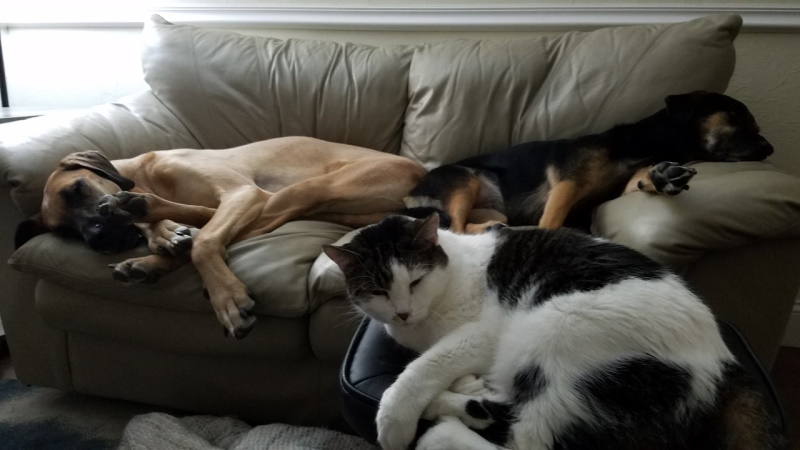
Gaby has been missing colleagues and student chats in the office, but in some ways this is a return to normal for her. “Starting with my first postdoc, I was doing this whole remote thing before it was cool!”, which prepared Gaby nicely for the reality of life in an extended pandemic. In addition to teaching undergraduates, Gaby has also been teaching her colleagues (and providing remote tech support) all about planning and running online courses.
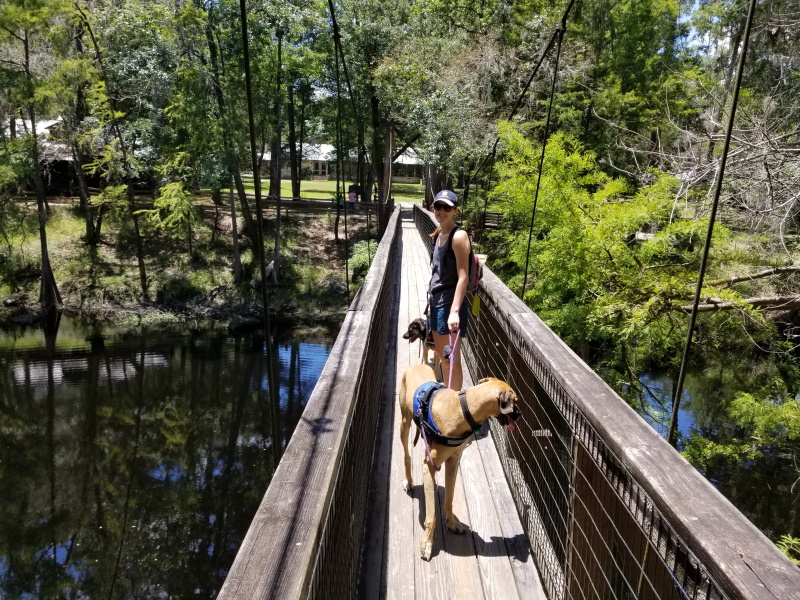
Gaby and her husband Tyler had planned on visiting Switzerland this summer, but instead they dedicated themselves to home improvement projects – they screened in a porch, installed a stone patio, and painted parts of the house. They’ve also been getting out of the house for hikes, as their dogs don’t care that there’s a pandemic out there – they are still as energetic as ever (especially the Great Dane puppy)!
Credit: Mike Ryan Simonovich
